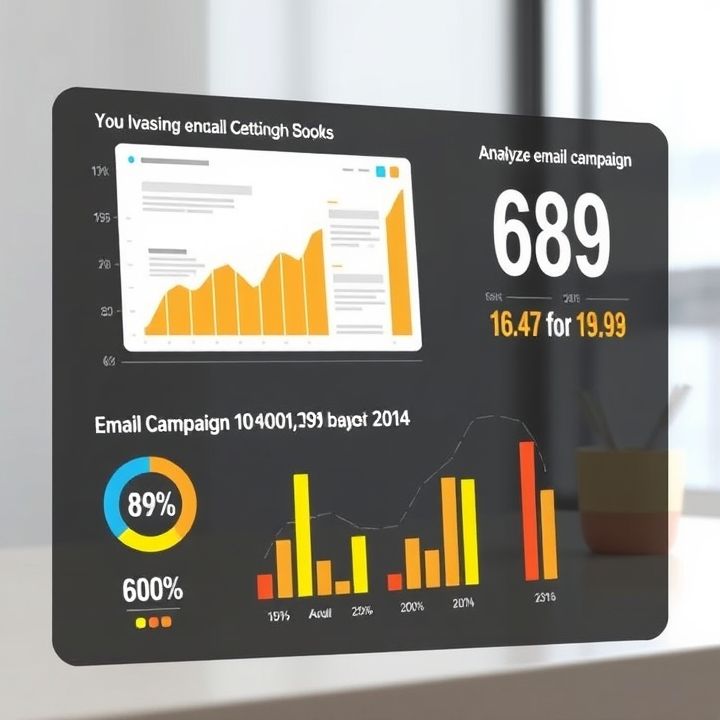Table of Contents
- Introduction
- Understanding the Psychology of Urgency and Scarcity
- Crafting Compelling Subject Lines
- Utilizing Countdown Timers
- Creating Limited-Time Offers
- Employing Social Proof to Enhance Scarcity
- Conclusion
- Frequently Asked Questions
Introduction
Are you ready to revolutionize your email marketing strategy and see a surge in response rates like never before? Whether you’re crafting compelling newsletters or launching a targeted campaign, understanding the secrets of urgency and scarcity could be your golden ticket to achieving a 10x boost in engagement. Imagine your email list eagerly awaiting your messages thanks to a strategy that’s as effective as it is awe-inspiring!
| Elements | Platforms | Benefits |
|---|---|---|
| Urgency | Email, Social Media | Increases opens and clicks |
| Scarcity | Email, Website | Boosts conversions and actions |
In this thrilling guide, we’ll delve into the psychology behind these powerful tools, and how you can harness them to not just capture attention but drive action. Mastering the art of urgency and scarcity is not just about persuasion; it’s about setting your emails apart in an inbox that’s overflowing with competition.
Get ready to discover the strategies that can skyrocket your response rates and turn your email marketing into a powerhouse of engagement!
Understanding the Psychology of Urgency and Scarcity
Understanding the psychology of urgency and scarcity is essential in crafting compelling emails that drive immediate action. These principles tap into an innate human desire to act swiftly and avoid missing out on valuable opportunities. Urgency creates a time-sensitive pressure that encourages the recipient to make a quick decision. By setting deadlines or highlighting flash sales, you can create a sense of urgency that compels the reader to act now rather than later.
Scarcity, on the other hand, emphasizes the limited availability of a particular product or service. By informing customers that ‘only a few items are left in stock’ or ‘this offer is available for a limited time,’ you trigger the fear of missing out. This fear can be a powerful motivator as people tend to place a higher value on something that appears to be rare or unique.
When applying these techniques in email marketing, it’s crucial to be genuine and ensure that the urgency and scarcity messages align with your brand’s voice and the actual situation. Misusing these principles can lead to mistrust and may damage your brand’s reputation. However, when executed correctly, leveraging urgency and scarcity can significantly boost engagement and drive quick responses.
Crafting Compelling Subject Lines
Crafting compelling subject lines is an essential component of effective email marketing, particularly when aiming to leverage urgency and scarcity techniques. A well-written subject line grabs the recipient’s attention immediately, driving them to open the email without hesitation. One way to create a sense of urgency is to incorporate time-sensitive language, such as “limited time offer” or “only a few hours left,” which can prompt recipients to act quickly. Similarly, scarcity can be highlighted by mentioning limited quantities, using phrases like “only 10 left” or “selling out fast.”
In addition to these strategies, it’s crucial to make the subject line relevant and personalized, which enhances the perceived value of the email. Utilizing the recipient’s name or leveraging their past interactions with the brand can make the message feel tailored to their current needs or interests. Furthermore, keeping the subject line concise and clear ensures that the message is easily digestible, even at a glance. Incorporating power words such as “exclusive,” “urgent,” or “alert” can also heighten the emotional response, compelling the reader to take swift action.
Utilizing Countdown Timers
Utilizing countdown timers in your emails can significantly drive urgency and encourage immediate action from your recipients. These timers visually represent the time left for an offer or deal, creating a sense of urgency that words alone cannot convey. When subscribers see a ticking clock, they’re reminded that the opportunity is fleeting, potentially prompting them to make faster decisions.
Countdown timers can be used for various purposes, such as limited-time sales, flash promotions, or event registrations. By integrating them with your email marketing strategy, you effectively communicate the limited availability of the offer, which can lead to increased click-through rates and conversions.
However, it’s crucial to ensure that the timer aligns with the actual deadline. Misleading timers can damage your credibility and lead to a loss of trust among your audience. Additionally, consider the placement of the timer within the email; it should be prominent yet not overwhelming, complementing the email’s overall design and message. Strategically using countdown timers can transform your email campaigns, compelling recipients to act swiftly due to the tangible reminder of time running out.
Creating Limited-Time Offers
Creating limited-time offers is a powerful strategy for leveraging urgency in email marketing. By setting a definitive expiration date on deals, businesses can encourage recipients to act quickly, boosting engagement and conversion rates. These offers tap into the psychological principle of scarcity, suggesting that opportunities may vanish soon, thus motivating quick decision-making. To craft an effective limited-time offer, it is crucial to communicate the time-sensitive nature clearly. This can be done through bold headlines, countdown timers, and urgent call-to-action buttons, which remind readers of the ticking clock.
Additionally, personalizing offers by tailoring them to the recipient’s preferences or past behaviors can further enhance their appeal. This approach resonates more with the audience, making them feel that the offer is crafted specifically for them, thus increasing the likelihood of immediate action. Marketers should also highlight the unique value proposition of the offer, emphasizing benefits or exclusive features that set it apart from regular offerings. Ensuring that the promotion aligns with the customer’s needs and desires increases its perceived value.
By combining urgency with relevant and attractive offers, businesses can effectively drive prompt responses and maximize the impact of their email campaigns.
Employing Social Proof to Enhance Scarcity
To effectively leverage urgency and scarcity in your emails, incorporating social proof can be a game-changer. Social proof serves as a powerful psychological trigger that influences reader behavior by showing them what others are doing. When used strategically in conjunction with scarcity, it can magnify the sense of urgency and compel immediate action.
For instance, including testimonials or reviews alongside a limited-time offer not only highlights the benefits your product or service offers but also assures potential customers that others are finding value in it, increasing their fear of missing out. You could craft a message like, ‘Join the 500 satisfied customers who have already taken advantage of this exclusive deal—don’t miss out!’ By stating specific numbers, you reinforce the perception of high demand, making the limited availability seem even more pressing.
Another approach is showcasing real-time activity, such as ‘Only 3 spots left! Recently purchased by customers in your area.’ This combines both social proof and scarcity to create a compelling reason for immediate action. Ultimately, the synergy between social proof and scarcity elevates your emails’ persuasive power, potentially leading to higher engagement and conversion rates.
Conclusion
Mastering the art of urgency and scarcity in email marketing holds the potential to elevate your campaigns from ordinary to truly impactful. By understanding how these psychological triggers work and applying them through compelling subject lines, countdown timers, limited-time offers, and social proof, you can dramatically enhance your email response rates. The effective use of urgency and scarcity compels recipients to act swiftly, thus increasing engagement and conversion rates. However, it’s essential to stay genuine, ensuring that urgency and scarcity tactics are aligned with authentic brand values and current offerings. Misleading your audience can backfire, leading to distrust and reduced future interaction. When employed correctly, strategically balanced urgency and scarcity amplify the persuasive power of your emails, driving recipients to seize opportunities promptly. Keep honing these tactics, ensuring they remain fresh and relevant to your audience, and you’ll unlock a remarkable 10x increase in your email response rates.
















